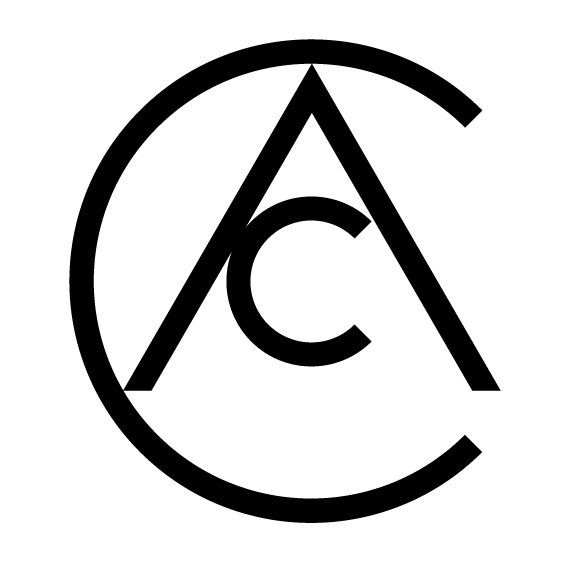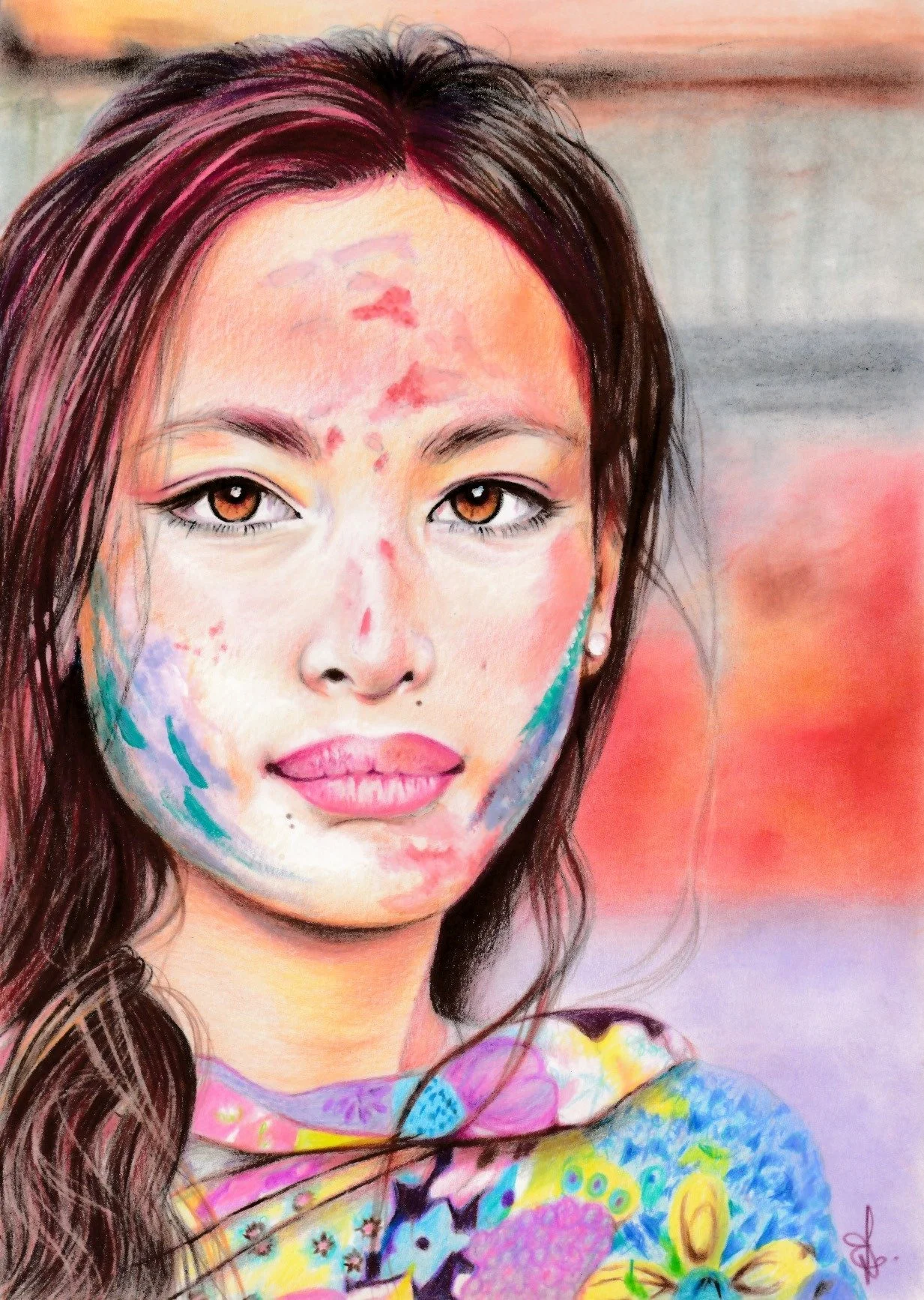Greta Schnall
https://art-by-greta-schnall.de/
In the contemporary art world where digital manipulation and surrealism are converging to redefine traditional disciplines, Greta Schnall emerges as a pioneering artist who fuses photography, architecture, and cubist abstractions into a profoundly unique vision. Her body of work, characterized by extreme digital editing of architectural photographs, serves as an audacious reimagination of both modernist aesthetics and the potential of architectural form. Schnall, through her innovative use of digital tools, turns often mundane and utilitarian structures into immersive dreamscapes, radically transforming our perception of built environments.
Born with a proclivity for visual storytelling, Schnall began her artistic journey through nature photography, delving into the intricate world of macro and landscape imagery. Yet, by 2010, her gaze shifted toward architectural forms—not merely as static entities but as canvases ripe for transformation. Her commitment to the craft and her fascination with surrealism and cubism coalesced into a practice that pushes the boundaries of architectural photography, evolving it into a genre of its own.
Schnall's works, such as "Green Metallic Balconies" and "Flying House Balls: Grey", reveal a profound interplay of structure and abstraction. Her pieces often begin with photographic captures of modern architectural facades—linear, stark, and often repetitive in their functional design. Through meticulous digital processing, these facades metamorphose into layered, fractalized compositions that echo the imaginative chaos of surrealist art while maintaining the geometric rigor of cubism.
Consider her piece, "Monochrome World". Here, stark grayscale tones dominate, yet Schnall’s manipulation introduces an almost kaleidoscopic fragmentation. Windows and balconies are multiplied, stretched, and distorted, forming a rhythmic pattern that oscillates between the mechanical and the fantastical. The result is a disorienting yet strangely harmonious piece that compels the viewer to reconsider the relationship between order and entropy within urban landscapes.
Schnall’s own statement encapsulates her artistic mission: “Above all, I want to show how the simple, often depressing architecture on photos can be changed with image editing in an imaginative and exciting way.” This philosophy positions her as both a critic of architectural monotony and a dreamer—one who seeks to imbue the sterile facades of modernity with layers of complexity, imagination, and inspiration.
Her approach aligns her with the tradition of surrealist masters such as René Magritte and the analytic deconstructions of cubism as championed by Pablo Picasso. Yet, where these earlier artists worked in paint and collage, Schnall’s medium is unapologetically digital, situating her firmly in the zeitgeist of 21st-century art. Her works carry the echo of an urban utopia, layered with contradictions, where the rigid constraints of modern design dissolve into the boundless possibilities of imagination.
One of Schnall’s most compelling achievements is her ability to manipulate digital tools to such a degree that they transcend their mechanical origins. In pieces such as "Icy Balconies" and "Winter in White Town", there is a palpable interplay of materiality and illusion. The facades’ icy tones and their almost crystalline distortions evoke a sense of otherworldly landscapes while retaining the essence of urbanity. These works are not merely digital renderings; they are windows into parallel dimensions—worlds where the boundaries between architecture and nature, order and chaos, dissolve.
The work "Orange Balconies III" demonstrates Schnall’s skill in transforming warm, vibrant colors into dynamic compositions that juxtapose the organic with the industrial. Her intricate layering creates a sense of movement within the stillness, reminiscent of the futurists’ obsession with dynamism. Schnall, however, steers clear of the cold mechanicalism of futurism, grounding her work in the human and the poetic.
To place Schnall within the broader trajectory of art history, one might liken her practice to the architectural deconstructions of Piranesi. Like Piranesi’s labyrinthine etchings of prisons and imaginary cities, Schnall’s works revel in the creation of impossible spaces. Yet, where Piranesi's medium was ink and etching, Schnall’s is pixels and algorithms, allowing her to manipulate scale, repetition, and perspective with unparalleled fluidity.
Schnall’s ability to elevate the banal—to take a photograph of a facade and transform it into a surrealist symphony—is where her genius lies. In this way, she echoes the methodologies of Louise Bourgeois, who famously said, “Art is the guarantee of sanity.” Schnall’s works guarantee not only sanity but also a sense of wonder in an age that often feels architecturally monotonous.
Within the contemporary art market, Schnall holds a unique position. Her works, simultaneously photographic and painterly, challenge traditional categories of art. This versatility has made her a fixture in group exhibitions across Europe, Asia, and the Americas. Her pieces resonate particularly in countries with a strong architectural tradition, such as Germany and Japan, where audiences are attuned to her critique and reimagining of urban landscapes.
Schnall’s pieces also hold commercial appeal, as they combine the familiarity of photography with the allure of abstraction. This duality positions her works as accessible yet intellectually stimulating—an ideal combination for collectors seeking art that bridges modern aesthetics and timeless themes.
Greta Schnall’s art embodies a deeply philosophical exploration of modernity’s intersections: architecture and humanity, the functional and the fantastical, order and imagination. Her works demand that we reconsider how we interact with the built environment—not as passive observers but as active participants in its continual reimagining.
Schnall’s legacy, though still unfolding, is certain to leave an indelible mark on contemporary art. She has carved out a niche that is uniquely her own, blending disciplines and philosophies in ways that feel both fresh and profound. Her works remind us of the boundless possibilities of creativity in the digital age, urging us to see not only the world as it is but also the myriad ways it could be.
What makes Schnall’s work particularly remarkable is the seamless blending of technological innovation with artistic vision. Her approach is not simply about mastering tools but about challenging their inherent boundaries. In works like "Frosty Town" and "Sundown Village", the viewer can trace her meticulous construction of environments that are at once familiar and alien. The color palette of *"Frosty Town"—*with its cool, icy blues and whites—evokes both urban winterscapes and abstract glacial forms, suggesting a merging of architecture with natural phenomena.
Her series focusing on urban balconies, particularly "Green Metallic Balconies", is an insightful commentary on the repetitive and often impersonal nature of modern apartment architecture. Yet, Schnall’s genius lies in her ability to break down these forms into components and then reconstruct them into entirely new entities. The "balconies" cease to be utilitarian features; instead, they become integral to a dynamic, kaleidoscopic system of shapes, hues, and reflections that simultaneously critique and celebrate their origins.
Schnall’s work invites viewers to contemplate the philosophical aspects of space and form. Her pieces challenge the very notion of architectural permanence by presenting mutable, fractal-like spaces that seem to fold in and out of themselves. This approach aligns with philosophical ideas of space as fluid and constructed rather than fixed and given. Her manipulations evoke Gilles Deleuze’s concept of the "fold," where space is perpetually unfolding, dynamic, and inherently interconnected.
The tension between reality and illusion is central to her oeuvre. In works like "Chocolate Town" and "Down to Urban Stripes", the viewer is confronted with a deliberate ambiguity. Are these structures collapsing, expanding, or existing in a moment of suspended animation? The ambiguity reflects a larger existential question about modern life—its impermanence and its capacity for reinvention.
Schnall’s participation in exhibitions across Germany, Austria, Switzerland, Italy, the United Kingdom, Czech Republic, Hungary, Japan, China, Spain, France, Sweden, Greece, and the USA underscores her global appeal. Her art speaks to universal concerns—urbanization, architectural identity, and the impact of technology on perception—making it resonate with diverse audiences. In Japan, for instance, her surreal interpretations of facades align with the country’s reverence for architectural innovation, while in Germany, her transformations of modernist structures reflect the Bauhaus tradition reimagined for the digital era.
The universality of Schnall’s themes allows her work to transcend cultural boundaries. Her art engages with a global dialogue on architecture and imagination, positioning her as a thought leader in the evolving discourse on urbanism and creativity.
Greta Schnall’s approach draws parallels with the avant-garde movements of the early 20th century while simultaneously pushing their boundaries. The cubist deconstructions of Picasso and Braque find echoes in her fractalized forms, yet Schnall’s digital medium allows for a level of complexity and iteration unimaginable to her predecessors. Similarly, the surrealist dreamscapes of Salvador Dalí resonate in her work, yet her architectural focus and digital execution place her firmly in the contemporary canon.
One might also draw comparisons between Schnall and contemporary architects who blur the line between functionality and art, such as Zaha Hadid. Like Hadid’s fluid and futuristic buildings, Schnall’s works envision architecture not as static but as an evolving, almost organic entity. Yet, Schnall’s art transcends architecture by using it as a metaphor for broader human experiences—disorientation, reinvention, and the interplay of order and chaos.
As digital art continues to gain prominence in the broader art world, Schnall’s work serves as a benchmark for what is possible within the medium. Her pieces challenge traditional definitions of photography and architecture, proving that digital tools can be as expressive and impactful as traditional artistic media. Furthermore, her emphasis on architectural subjects situates her at the intersection of art and design, opening up new avenues for collaboration and exploration.
The increasing recognition of Schnall’s work by galleries and collectors indicates a growing appreciation for her unique contributions to contemporary art. As audiences become more attuned to the possibilities of digital manipulation, Schnall’s work is likely to gain even greater prominence, inspiring a new generation of artists to explore the boundaries of their mediums.
In a world increasingly defined by its architectural and technological landscapes, Greta Schnall’s art serves as both a critique and a celebration of modernity. Her ability to transform the ordinary into the extraordinary, the functional into the fantastical, places her among the most innovative artists of her generation. By bridging the gap between photography, digital art, and architectural critique, she has carved out a space that is uniquely her own.
Greta Schnall’s work reminds us of the endless possibilities of artistic vision in the digital age. It challenges us to see beyond the surface of our environments, to reimagine the familiar, and to embrace the transformative power of creativity. As her legacy continues to grow, there is little doubt that her work will remain a touchstone for both the art world and the broader cultural imagination, inspiring future generations to dream, innovate, and reimagine the world around them.
By Marta Puig
Editor Contemporary Art Curator Magazine
Down To Urban Stripes, 2023, photography and digital art, 90 x 45
Green Metallic Balconies, 2023, photography and digital art, 70 x 83
Orange Balconies III, 2022, photography and digital art, 65 x 82
Monochrome World, 2022, photography and digital art, 80 x 60
Icy Balconies, 2022, photography and digital art, 70 x 80
Sundown Village, 2023, photography and digital art, 70 x 80
Winter In White Town, 2023, photography and digital art, 70 x 80
Flying House Balls Grey, 2023, photography and digital art, 70 x 85
Frosty Town, 2023, photography and digital art, 73 x 80
Chocolate Town, 2023, photography and digital art, 70 x 80













